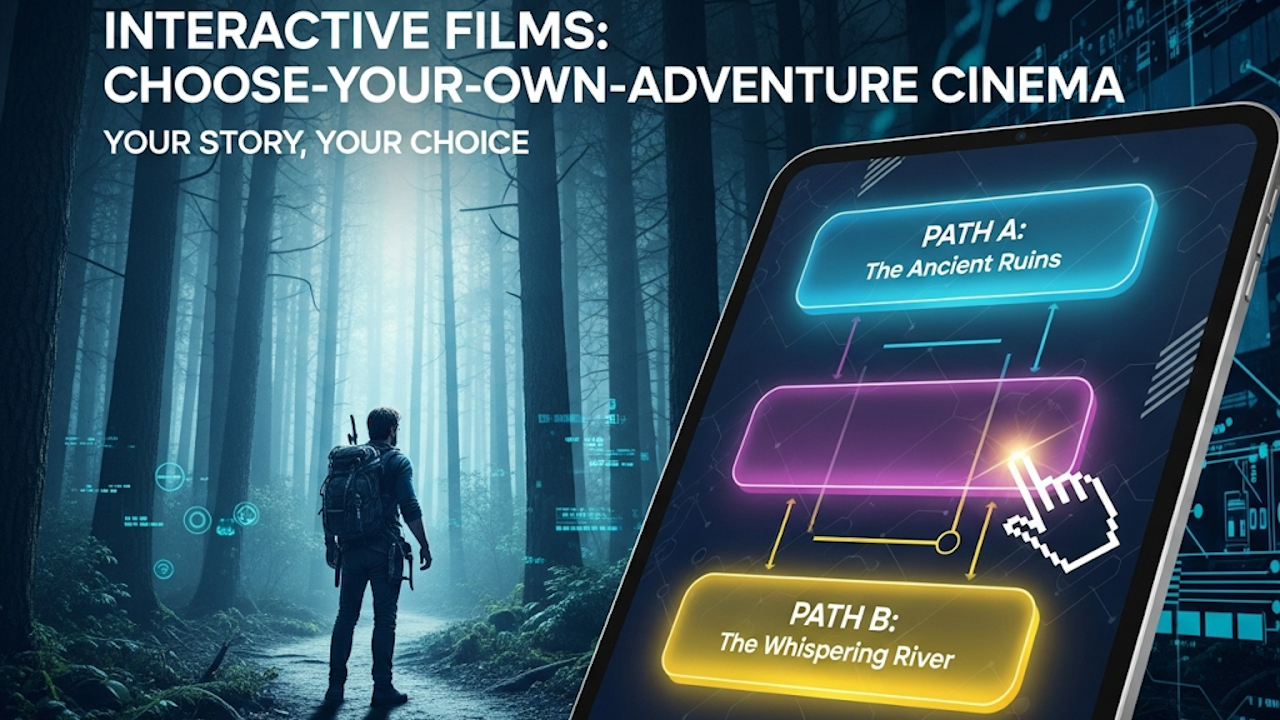The concept of interactive films, often referred to as “Choose-Your-Own-Adventure Cinema,” has a long and fascinating history, blending the narrative power of film with the participatory nature of video games. This genre allows audiences to become active participants, influencing the plot and outcomes of the story. While it has been explored in various forms over the decades, recent advancements in technology and streaming platforms have brought it to the forefront of entertainment.
The Origins: A Historical Look
The roots of interactive cinema can be traced back to before the digital age. One of the earliest and most notable examples is the 1967 film Kinoautomat, screened at Expo ’67 in Montreal. This groundbreaking movie utilized a live moderator who appeared on stage at key moments to poll the audience on which scene they wanted to see next. The result of the majority vote would then determine the direction of the story. This innovative approach demonstrated the early potential of audience participation in a cinematic experience.
With the invention of the LaserDisc in the 1970s, a new era of interactive media began. The LaserDisc’s ability to instantly jump to different chapters made it the perfect medium for branching narratives. Arcade games like Dragon’s Lair (1983) were pioneers in this space, using full motion video (FMV) to create a visually rich experience. Players would watch animated scenes and respond to on-screen prompts, known as “quick time events,” to guide the protagonist’s actions and progress the story.
The rise of VHS and CD-ROM technology in the 1990s led to a boom in interactive games and films. Titles like Phantasmagoria and The 7th Guest offered immersive, often puzzle-based stories where players navigated pre-rendered environments and made choices that affected the narrative. These early examples, while sometimes clunky by today’s standards, laid the foundation for modern interactive storytelling.
The Modern Era and Streaming Platforms
The most significant resurgence of interactive films has come with the advent of high speed internet and streaming services. Netflix, in particular, has become a major player in this field. Its interactive specials, such as Black Mirror: Bandersnatch (2018), brought the concept to a massive global audience. The success of Bandersnatch proved that viewers were not only interested in, but also eager to engage with, a format that allowed them to shape the narrative.
Netflix has since expanded its library of interactive content to include a variety of genres and target audiences. From the survivalist adventures in You vs. Wild starring Bear Grylls to animated specials for children like Minecraft: Story Mode, the platform has shown the versatility of the interactive format. These projects utilize a technology that allows for seamless transitions between different story paths, creating a more cohesive and immersive experience than their predecessors.
Challenges and the Future
Despite the growing popularity, interactive films face several challenges. One of the main criticisms is that the level of interactivity can sometimes feel limited. The narrative is still confined to a predetermined set of choices, and the illusion of control can be broken if the player’s actions do not have a meaningful impact on the story. Critics argue that this can detract from the traditional cinematic experience, where a singular vision is crafted by a director.
The financial and logistical complexities of creating interactive films are also a factor. Producing a movie with multiple branching storylines and endings is far more expensive and time-consuming than making a linear film. It requires a different approach to screenwriting, filming, and post-production, as every possible outcome needs to be planned and shot.
However, the future of interactive cinema appears bright. Companies are exploring new ways to make the experience more seamless and engaging. The integration of gaming and film continues to evolve, with platforms and developers constantly pushing the boundaries of what is possible. As technology advances, we can expect to see more sophisticated interactive narratives, potentially even in live cinema settings where a large audience can collectively influence a film’s direction.
In conclusion, interactive films represent a unique and exciting evolution in storytelling. By putting the audience in the director’s chair, they offer a new layer of engagement and replayability that linear films cannot match. While there are still hurdles to overcome, the legacy of “Choose-Your-Own-Adventure Cinema” continues to grow, promising a future where the line between viewer and storyteller becomes increasingly blurred.

